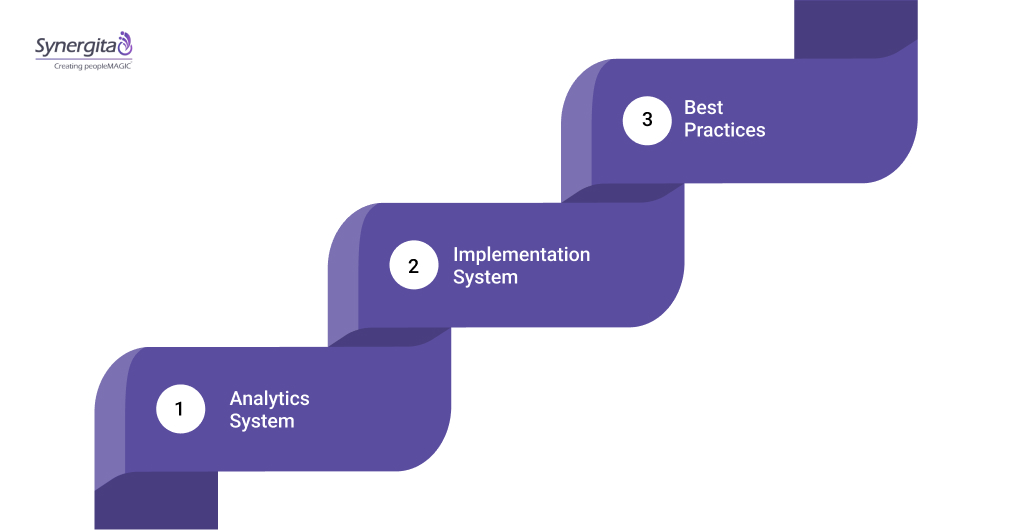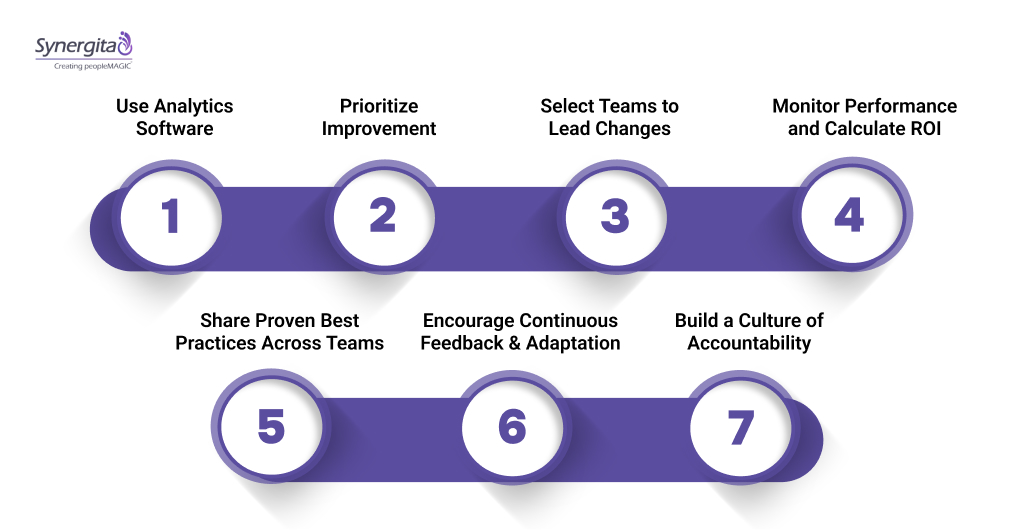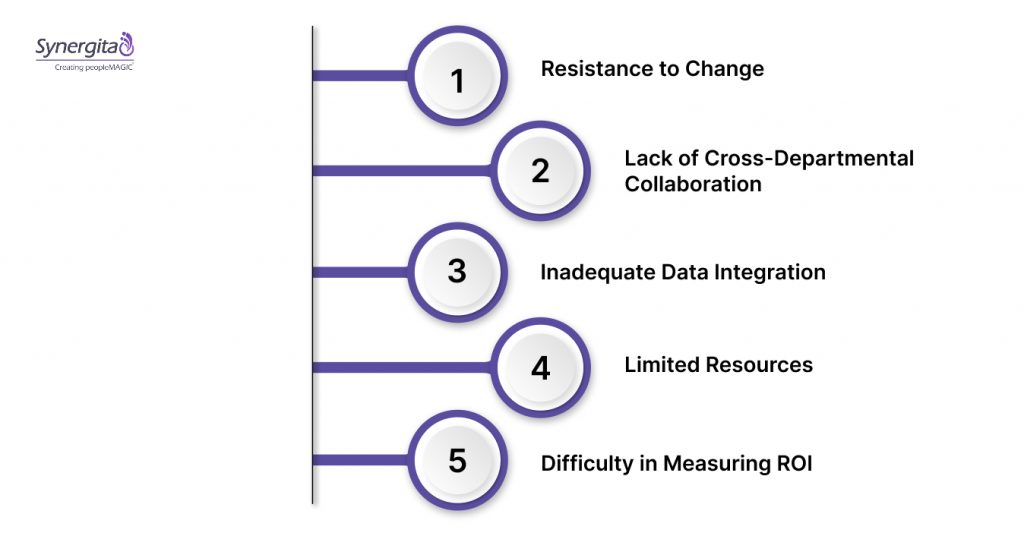The healthcare industry is under constant pressure to improve efficiency, reduce costs, and, most importantly, enhance patient care. However, many organizations still face challenges like staff burnout, misaligned goals, and operational inefficiencies.
These challenges not only impact the quality of care but also affect the overall performance of healthcare teams and organizations.
Performance improvement in healthcare focuses on addressing these issues by optimizing processes, aligning goals, and fostering continuous feedback. By implementing structured performance improvement strategies, healthcare organizations can improve both team performance and patient outcomes.
In this blog, we’ll explore what performance improvement is in healthcare, why it’s important for success, and how the right tools can drive measurable change.
For Skimmers:
- Performance improvement in healthcare focuses on optimizing systems, processes, and staff performance to enhance patient care and reduce costs.
- Effective PI requires goal alignment, continuous feedback, and data-driven decision-making to track progress and measure outcomes.
- Healthcare organizations can benefit from technology solutions like Synergita to streamline PI through real-time dashboards, goal tracking, and feedback systems.
- Adopting PI tools results in better patient outcomes, improved staff engagement, and operational efficiencies in healthcare organizations.
What is Performance Improvement in Healthcare?
Performance improvement (PI) in healthcare is all about making healthcare systems more efficient. It focuses on reducing waste, improving patient outcomes, and simplifying care delivery.
By aligning healthcare teams with clear goals, PI helps optimize processes and drive better results. PI isn’t a one-time task. It’s a continuous process of evaluating and adjusting. Healthcare organizations must regularly assess their performance, gather data, and refine their approach.
This helps teams stay agile and meet the changing needs of patients and the healthcare system.
As healthcare organizations face growing pressures, performance improvement becomes essential for overcoming these challenges.
Why is Performance Improvement Essential in Healthcare?
Performance improvement is crucial in every sector, and healthcare is no exception. Rising costs, inefficiencies, and the need for better alignment across teams constantly challenge healthcare organizations.
These challenges can lead to confusion, missed opportunities, and underperformance, making it harder to meet organizational goals.
Here are the key reasons why performance improvement is essential in healthcare:
- Aligns Teams with Organizational Goals: PI ensures that everyone, from healthcare providers to administrative staff, is working toward the same objectives.
- Improves Efficiency: With PI, healthcare teams can identify and eliminate bottlenecks, simplify workflows, and reduce unnecessary processes, driving operational efficiency.
- Enhances Staff Engagement: Employee engagement is critical for performance improvement. It helps create a feedback-rich environment, boosting morale, increasing retention, and improving productivity.
- Supports Continuous Improvement: PI is not a one-time effort; it’s an ongoing process. Continuous feedback and regular performance evaluations help healthcare organizations stay agile and improve over time.
- Drives Data-Driven Decision Making: PI relies on data to guide improvements. Data-driven reporting provides actionable insights that can help healthcare leaders make informed decisions to optimize performance and achieve goals.
- Cost Savings: Performance improvement helps healthcare organizations identify inefficiencies, reduce waste, and optimize resource allocation. By facilitating processes and eliminating unnecessary steps, PI can lead to significant cost savings while improving care delivery and operational performance.
- Improving Communication and Coordination: PI helps you to break down miscommunication and gaps between departments for better coordination. Centralized systems, secure messaging, and other collaborative tools allow teams across the care continuum.
- Minimizing Administrative Burden: Automating routine tasks like patient communication and chart summarization can significantly reduce administrative workload.
Also Read: Best Tools for OKR Management and Visualization
Improving healthcare performance takes more than just fixing problems; it requires clear goals and better coordination. By focusing on key areas, your organization can boost efficiency and create real, lasting improvements.
How to Build a High-Performance Healthcare System
To build a high-performance healthcare system, healthcare organizations need to focus on aligning their goals, improving communication, and optimizing workflows. Here’s how you can get started:

1. Analytics System
Centralize data from multiple sources to get a clear view of your organization’s performance. By combining patient data, operational metrics, and staff feedback, healthcare teams can accurately assess where improvements are needed.
A strong analytics system helps you make informed decisions and track progress in real time.
2. Implementation System
Successful performance improvement requires ownership at every level. Teams across departments should take charge of identifying key improvement areas, deploying solutions, and assessing the results.
Clear accountability ensures that each part of the organization is actively contributing to continuous improvement.
3. Best Practices
Adopting industry best practices across your healthcare system helps standardize care delivery and improve efficiency. By identifying and implementing proven methods in specific areas, you can ensure a higher level of service while minimizing errors and inefficiencies.
Implementing a healthcare performance improvement program requires a clear roadmap and structured approach to ensure progress.
Steps to Implement a Healthcare Performance Improvement Program
Implementing a healthcare performance improvement program involves a structured approach to ensure changes are impactful and measurable. Here’s a step-by-step guide to building an effective program:

1. Use Analytics Software
To drive performance improvement, you first need to understand where the gaps are. Analytics software helps healthcare organizations centralize data from multiple sources, such as patient records, staff feedback, and operational metrics.
By analyzing this data, you can identify inefficiencies, blockages, or areas where patient care can be enhanced. These insights are important for targeting specific areas for improvement that will have the most significant impact.
2. Prioritize Improvement
Not all problems can be solved at once. Once you’ve identified opportunities for improvement, it’s essential to prioritize them based on their impact and feasibility. Evaluate each project’s potential return on investment (ROI), its effect on patient outcomes, and how quickly it can be implemented.
Focusing on high-impact initiatives will ensure your resources are spent where they’ll make the most significant difference.
3. Select Teams to Lead Changes
A performance improvement program requires leadership at every level. Assigning cross-functional teams responsible for each initiative ensures that each project gets the attention and resources it needs.
These teams should be made up of healthcare professionals from various departments, who can bring diverse perspectives to the table. Empower these teams with the authority to make decisions and implement changes, fostering a sense of ownership and accountability.
4. Monitor Performance and Calculate ROI
Once the initiatives are underway, it’s crucial to continuously monitor performance. Use data to track progress and measure the effectiveness of the changes implemented. Regular performance reviews will help you identify what’s working and where further adjustments are needed.
Calculate the ROI of each improvement project by comparing the outcomes to the resources invested. This helps ensure that your efforts are delivering tangible results.
5. Share Proven Best Practices Across Teams
Performance improvement doesn’t stop within a single team or department. Once successful strategies and processes are identified, share them with other teams or even other healthcare organizations.
This cross-collaboration spreads best practices, helping all teams improve and align with organizational goals. Sharing these insights can also foster a culture of continuous improvement and innovation, driving long-term success.
6. Encourage Continuous Feedback and Adaptation
A key element of any performance improvement program is the ability to adapt. Encourage a continuous feedback loop where teams can provide input on what’s working and what’s not.
This ongoing dialogue helps to identify issues early and make adjustments as needed. Regular feedback not only helps in refining strategies but also keeps teams engaged and invested in the process.
7. Build a Culture of Accountability and Recognition
For performance improvement to stick, it needs to be supported by a culture of accountability. Hold teams responsible for achieving their goals and meeting performance targets.
At the same time, recognize and celebrate successes. Acknowledging progress motivates teams to keep pushing for improvement and reinforces the value of the program across the organization.
Recognition can also lead to higher employee engagement and retention, which are critical in high-stress healthcare environments.
Also Read: How to Improve Cross-Functional Communication and Boost Team Performance
Even with a well-structured performance improvement program in place, healthcare organizations often face obstacles during implementation. These challenges can hinder progress and make it difficult to achieve desired outcomes.
Challenges in Implementing Performance Improvement in Healthcare
Implementing a performance improvement program in healthcare can be complex, with several barriers that may hinder progress. From resistance to change to data integration issues, these challenges require thoughtful solutions.

Here are some of the common hurdles healthcare organizations face while implementing performance improvement initiatives:
- Resistance to Change: Healthcare teams may be reluctant to adopt new processes or technologies, especially if they are accustomed to traditional workflows. Overcoming this resistance requires strong leadership, clear communication, and training to show the benefits of the new system.
- Lack of Cross-Departmental Collaboration: Performance improvement often requires collaboration between different departments, yet silos can make it difficult to share information and coordinate efforts. Breaking down these silos is essential to ensure that everyone is aligned toward the same goals.
- Inadequate Data Integration: Healthcare organizations often use multiple systems that don’t communicate with each other. This can make it difficult to gather and analyze data effectively. A lack of integration between these systems can slow down decision-making and hinder performance tracking.
- Limited Resources: Budget constraints and staffing shortages can limit the resources available to support performance improvement efforts. Organizations must find ways to allocate time, personnel, and budget effectively to ensure successful implementation.
- Difficulty in Measuring ROI: Tracking the effectiveness of performance improvement initiatives can be challenging. It may be difficult to quantify the return on investment, especially when improvements in patient care or staff engagement don’t have immediate financial benefits. Clear KPIs and regular performance monitoring are essential to measure success accurately.
With tools like OKR tracking, real-time feedback, and analytics dashboards, Synergita enables healthcare teams to align and collaborate effectively across departments. Read how Synergita helped a healthcare organization improve its performance, reduce inefficiencies, and enhance team engagement.
Conclusion
Performance improvement in healthcare is crucial for enhancing both patient care and operational efficiency. By continuously optimizing processes, healthcare organizations can overcome challenges and create a more efficient, engaged workforce.
With the adoption of the right tools and strategies, healthcare teams can streamline goal-setting, improve performance tracking, and foster real-time collaboration. This leads to better outcomes across the board, from improved patient care to enhanced team engagement.
Ready to see how Synergita can help your organization drive performance improvement? Book a demo today and take the first step toward optimizing your healthcare performance.
FAQs
1. What is performance improvement in healthcare?
Performance improvement in healthcare focuses on enhancing efficiency, reducing waste, and optimizing patient care through better team alignment and process management.
2. How can performance improvement impact healthcare organizations?
By improving communication, workflow, and goal alignment, PI helps healthcare organizations deliver better care, reduce costs, and increase staff engagement.
3. What tools can help with performance improvement in healthcare?
Analytics software, real-time feedback systems, and goal-tracking tools like OKRs can provide the data and insights needed to optimize healthcare performance.
4. How do you prioritize performance improvement projects in healthcare?
Evaluate potential projects based on their impact, feasibility, and return on investment, focusing on those that can make the most significant difference in efficiency and patient care.
5. Why is cross-departmental collaboration important for performance improvement?
Breaking down silos between departments ensures better communication, shared decision-making, and more effective implementation of improvement initiatives across the organization.



